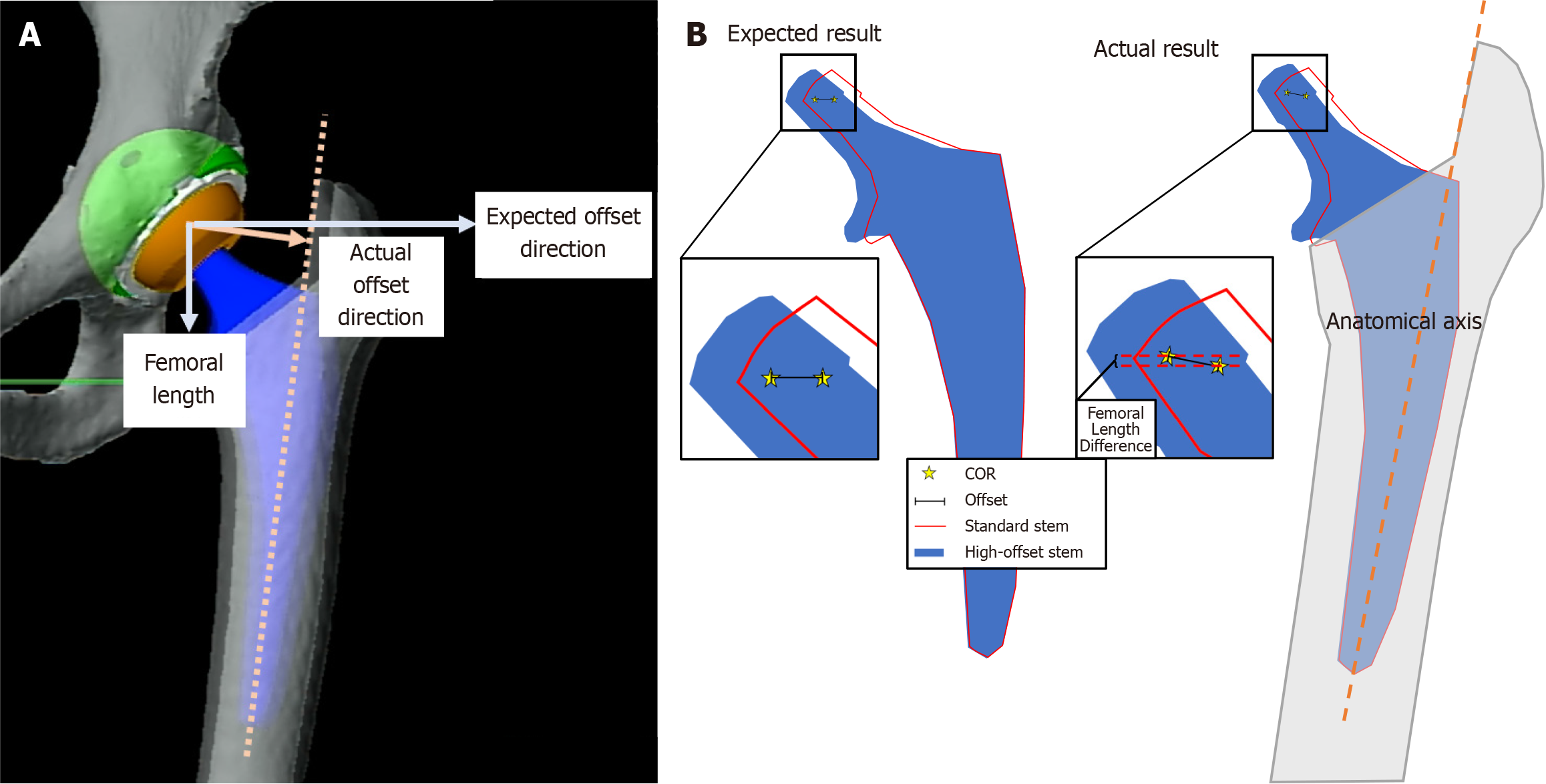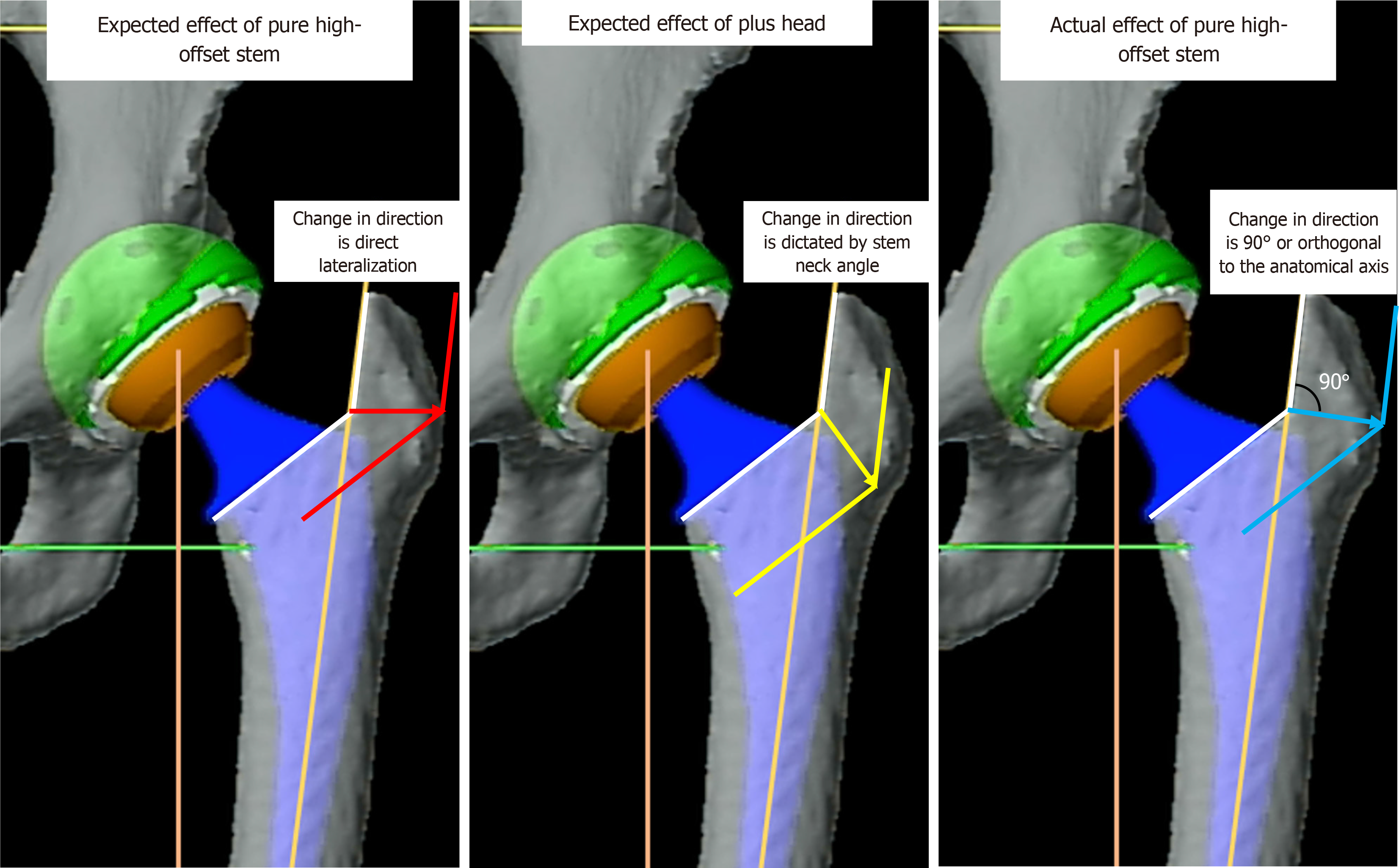Copyright
©The Author(s) 2025.
World J Orthop. Jun 18, 2025; 16(6): 107292
Published online Jun 18, 2025. doi: 10.5312/wjo.v16.i6.107292
Published online Jun 18, 2025. doi: 10.5312/wjo.v16.i6.107292
Figure 1 Mechanical and anatomical axes of the femur.
COR: Center of rotation; aMFA: Anatomical mechanical femoral axis.
Figure 2 The planned stem axis is aligned to the anatomical axis of the femur, or the expected trajectory of the femoral component of the prosthesis inside the femoral canal, and not directly aligned with the mechanical axis along which the length of the femur is measured relative to the ground.
A: When using a “pure” high-offset stem, most surgeons expect the direction of change to be purely lateral. However, based on preoperative three-dimensional simulations, the actual offset direction also involves a vertical component, which has not been previously well described; B: A “pure” high-offset stem is assumed to only have a lateral offset component. However, the preoperative planning software aligns the planned stem axis with the anatomical axis, causing the centers of rotation of the standard and high-offset femoral stems to move out of the same axial plane. A component of the offset is projected along the anatomical axis, leading to a femoral length difference. Thus, using a high-offset stem will cause an increase in femoral length.
Figure 3
Effects of a “pure” high-offset stem and a plus head on the change in femoral position and leg length in a two-dimensional plane.
- Citation: Tung WS, Eslam Pour A, Sieberer J, Donnelley CA, Tommasini SM, Wiznia DH. Pure high-offset stems can cause an unexpected increase in femoral length in robotic-assisted primary total hip arthroplasty. World J Orthop 2025; 16(6): 107292
- URL: https://www.wjgnet.com/2218-5836/full/v16/i6/107292.htm
- DOI: https://dx.doi.org/10.5312/wjo.v16.i6.107292











